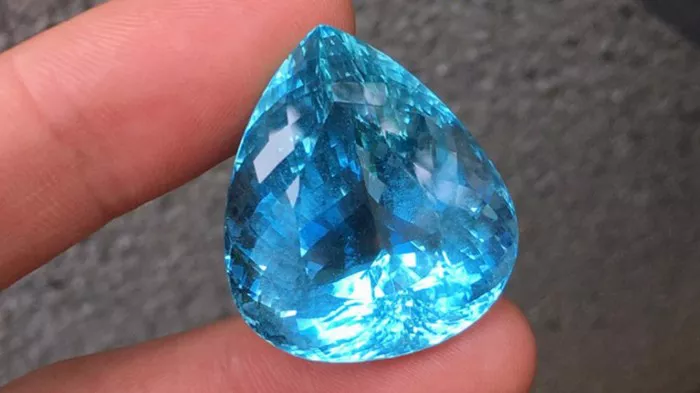Aquamarine, with its captivating blue hue reminiscent of clear ocean waters, is a gemstone that has fascinated humans for centuries. As we delve into the world of aquamarine, one question that often arises is: How old is this mesmerizing gemstone? Understanding the age of aquamarine involves delving into its geological journey, exploring the processes that form this precious stone over millions of years. In this article, we will embark on a journey through time to unravel the age of aquamarine, unveiling the secrets hidden within this enchanting gem.
The Formation of Aquamarine
To comprehend the age of aquamarine, it is essential to understand how this gemstone forms. Aquamarine belongs to the beryl family of minerals, which also includes emerald and morganite. The formation of aquamarine begins with the cooling and solidification of magma deep within the Earth’s crust. As the magma cools, it forms large pockets of igneous rock known as pegmatites.
Within these pegmatites, under specific geological conditions, the beryl minerals begin to crystallize. The blue color of aquamarine is attributed to trace amounts of iron present during the crystal formation process. Over time, hydrothermal fluids rich in silica and other minerals interact with the beryl crystals, influencing their growth and contributing to the unique characteristics of aquamarine.
The Age of Aquamarine Crystals
Determining the precise age of individual aquamarine crystals can be a complex process. It involves the use of various scientific techniques and methods to analyze the geological context and age of the rocks in which the aquamarine is found. By studying the surrounding minerals and the geological history of the region, geologists can estimate the age range of aquamarine formations.
Aquamarine crystals are often found within pegmatites, which can range in age from hundreds of millions to billions of years. These pegmatites are typically associated with the formation of large-scale geological events, such as the cooling of magma chambers during tectonic activity or the emplacement of igneous rocks during mountain-building processes.
Radiometric Dating Techniques
Radiometric dating techniques play a crucial role in estimating the age of aquamarine formations. These techniques rely on the decay of radioactive isotopes within rocks and minerals to determine their age. Two commonly used radiometric dating methods in the study of aquamarine age are uranium-lead dating and potassium-argon dating.
Uranium-Lead Dating
Uranium-lead dating is frequently employed to determine the age of the zircon crystals found within pegmatites associated with aquamarine. This technique measures the ratio of uranium to lead isotopes present in the crystal. As uranium decays into lead at a known rate, the ratio between the two isotopes provides an estimate of the crystal’s age.
Potassium-Argon Dating
Potassium-argon dating is another radiometric technique that can be used to determine the age of aquamarine-bearing rocks. This method measures the decay of potassium-40 into argon-40 within the minerals. By analyzing the ratio of these isotopes, geologists can estimate the time since the rock or mineral cooled and solidified.
Geological Context
In addition to radiometric dating techniques, analyzing the geological context of aquamarine formations is vital in estimating their age. Geologists examine the surrounding rock layers, the presence of certain minerals, and the tectonic history of the region to infer the age range in which the aquamarine crystals were formed.
Aquamarine’s Ancient Origins
Aquamarine has a long and storied history, rooted in its ancient origins. While the precise age of individual aquamarine crystals can vary, the gemstone’s formation is typically associated with geological events that occurred millions to billions of years ago.
The formation of aquamarine often coincides with the creation of pegmatites, which are linked to major tectonic processes and geological transformations. These processes include the collision of tectonic plates, the uplift of mountain ranges, and the cooling of magma chambers deep beneath the Earth’s surface.
Aquamarine formations can be found in various parts of the world, each with its unique geological history. For instance, aquamarine from Brazil is associated with the Brazilian Shield, a geological region formed more than 2 billion years ago. Similarly, aquamarine from Pakistan is linked to the geological history of the Himalayan region, which dates back millions of years.
Conclusion
Unraveling the age of aquamarine is a complex task that involves analyzing the geological context, employing radiometric dating techniques, and examining the ancient origins of this enchanting gemstone. While precise age determinations for individual aquamarine crystals can be challenging, studying the surrounding rocks, minerals, and geological events provides valuable insights into the age range in which aquamarine formations occurred.
From the cooling of magma chambers to the emplacement of pegmatites, aquamarine’s formation is intertwined with Earth’s geological history, spanning millions to billions of years. Each aquamarine crystal holds within it a testament to the Earth’s ancient past and the transformative forces that have shaped our planet.
Related topics:
- Who should not wear aquamarine stone: A Bible Guide
- Who should wear aquamarine stone: A Full Guide
- Unveiling Authenticity: How to tell if aquamarine is real


